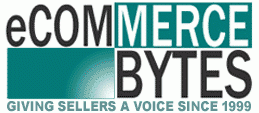Don Heiden, aka The Auction Professor on YouTube, is back with advice for resellers who find their growing inventory is taking over their space.

Regardless of what site you are selling on in this business, it all comes down to selling your items for a profit. That is the whole point of what resellers do. We list something up for sale and then, once it sells, we simply ship it to the buyer; at least that is how it is supposed to work.
I learned the hard way that processes need to be in place if you want to be successful and avoid pitfalls that could hurt your business. There is nothing worse than selling an item you have had listed for years only to realize that you do not remember where you have it stored.
When I first started reselling, I just listed items and stored them all in the same small area so it was not very hard to find an item after it sold. As time went by, my inventory grew and I soon had well over two thousand active listings. But what I did not have was a storage system that would help me find an item once it sold.
I was still mostly going from memory when I needed to pull an item to ship, but that all changed after I was unable to find a book that had just sold. For the very first time after spending almost two hours, I was unsuccessful in finding that item. Luckily, the buyer was understanding when I told him that I could not find his book; he did not leave me bad feedback, which was my biggest fear.
I vowed after that dilemma to never let that happen again and immediately went through my entire inventory. I setup a corresponding labeling system for both my listings and where I planned to store the physical items, themselves.
Having a location number that you can use in the listing, on a storage shelf or on a bin, is your best option. That way the location number of where your item is stored will be permanently tied to the actual listing for that item.
I should add, though, that you need to be very careful where you add the location number into your listing. If you cross list your items to other sites, or if you use a third-party API (Application programming interface), you could run into some trouble with your location number not importing or following your listings to other sites.
If you use a custom SKU line in your listings (such as on eBay or Amazon), that information may not show up in your cross listed listings on other sites. I have found it can be far easier to simply add the item’s location number to the title of my listings, which is always pulled over during any cross-listing or API procedure.
My best suggestion would simply be to use a letter, followed by a number, or numbers, to identify your storage locations, (A10, or B10). Then, as you fill up one storage bin you would just raise the number by one for the following bin (A11, or B11). I try to keep my location numbers simple and as short as possible. I rarely use more than four or five letters and numbers total.
I can also use letters to distinguish what type of item I am storing such as using “P1” for postcards or photos. You can even use the same exact numbers for many different items such as using “P110” for both records and postcards. There is no way to get confused on where to look, if you use the same numbering for very different items. No one will get confused on the differences between a record and a postcard.
For large items, I number the actual shelving units I use, which works great for pottery, electronics, or really anything bigger. For those items such as a vase or a DVD player, the listing would simply have the shelf number in the title, which makes it very easy to find those items.
For small items, such as postcards, stamps, trade cards, etc., I simply buy clear plastic tubs or bins along with dividers. I can then label the dividers each with their own location number. So, any cards or items after the numbered divider will all be stored in that same spot. Each new divider will have a new location number.
The plastic bin is also marked with the location numbers that can be found inside of it.
You can never have too much storage information. If you have employees, like I do, you may even want to draw out some diagrams showing where all locations numbers can be found.
These simple steps can save you a large amount of time and aggravation and can make your reselling life far easier.




It’s best to be organized! I’m doing big volume at low prices. My own goal is to be able to assemble orders instantly. After all, time is money!
I sell postal items, such as postcards, first day covers and postal history. My inventory is in the nice sturdy photo boxes you’d buy at Michaels or Hobby Lobby. I have different categories of items separated.
For instance my first day cover inventory is all by date order. I can find a cover instantly. I do have 10 year group marker cards to aid in this.
Same with my other categories such as postal history. Decade markers, then the items are just in random order. As my inventory grows, I will break it down to five year markers, and maybe even year markers. As inventory grew, I’d split out things like military related covers. Again, I can find stuff pretty fast.
I see other dealers resorting to inventory numbers, some even have these bar coded on clear plastic sleeves. I don’t have to go to that degree of organization or expense. I also have my mailers set ahead of time. Tonight I prepped 50 number 11 envelopes, and matching stiffener cards, all with postage attached.
Each morning I check my over night sales. 1-5 sales, even with multiple items per order, Pick the order from inventory. Hand address the envelope, enclose item(s) inside stiffener, stuff and seal. Done! I can easily fulfill those orders in minutes. And then I drop them at the post office on my way to work!